|
FOCUS / FORUM
INDEX
|
 |
In 2008, the Forum Comment,
was relaunched as the Focus
reflecting the closer comment from
NEMP and the panel of educators. |
 |
|
Main Index for Focus / Forum
Introduction
to Focus / Forum
He
Whakaputanga Whakaaro –
Introduction for Mäori
Medium forums
|
| Forums by year of assessment |
|
|
|
Science
Art
Graphs, Tables & Maps
|
|
|
|
Music
Aspects of Technology
Reading & Speaking |
|
|
|
Information
Skills
Social Studies
Mathematics |
|
 |
|
Listening
& Viewing
Health & Phys. Ed.
Writing |
|
| Forums for Mäori Medium |
|
|
|
Science
Art
Graphs, Tables & Maps
|
|
|
|
Music
Aspects of Technology
Reading & Speaking |
|
|
|
Information
Skills
Social Studies
Mathematics |
|
 |
|
Listening
& Viewing
Health & Phys. Ed.
Writing |
|
|
|
|
|
 |
|
 |
|
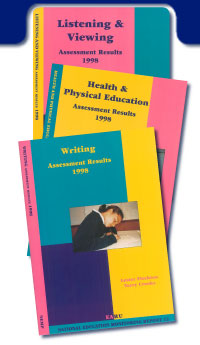
CLICK
on reports above to go directly
to comments |

Click
the Access Task icon for more information about
those tasks which are available to schools.
|
|
FORUM
PARTICIPANTS
Sandie Aikin
Robyn Baldwin
Audrey Banks
Jeanne Biddulph
Colin Brown
Nicole Brown
Jacky Burgon
Lisette Burrows
David Bycroft
Sheena Cameron
Mary Chamberlain
Tricia Chapman
Peter Corrigan
Cedric Croft
Terry Crooks
Jenny Earle
Liz Eley
Warwick Elley
Barbara Ferguson
Val Fergusson
Lester Flockton
Andy Fraser
Alison Gilmore
Ray Griffiths
Cedric Hall
Harry Hood
Jo Hunter
James Irving
Frances Kelly
Tina Leach
Ian Livingstone
Jane Marshall
Anne Meredith
Liz Patara
Wi Pohatu
Elizabeth Rhodes
Jim Strachan
Lovey Walsh
Lynne Whitney |
|
The
three reports on the 1998 assessment results were considered
by a national forum of curriculum and assessment specialists,
principals, teachers, advisers and representatives of
national educational organisations. Their comments highlight
what students are generally doing well, and those areas
where improvements are desirable.
The Listening & Viewing, Writing, and Health & Physical
Education reports are the fourth set of reports presented
during the first four year cycle of national monitoring.
They add to the nine reports produced from assessments
conducted in 1995, 1996 and 1997 (Science; Art; Graphs,
Tables & Maps; Reading & Speaking; Music; Technology;
Mathematics; Social Studies; and Information Skills). The
second four year cycle of national monitoring begins in
1999 with re-assessment in Science, Art, Graphs, Tables &
Maps. Results from the second cycle will allow comparisons
with performances in the previous cycle of assessments.
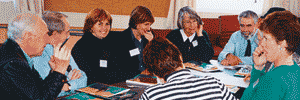
|
|
|
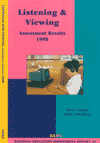 CLICK for
full report CLICK for
full report
|
LISTENING
– GOOD NEWS
Year 4 and year 8 students were able to identify
and recall facts and comprehend literal meanings
from a wide range of information.
Students responded well to listening tasks with contexts
that were functional and related to their own experiences.
Year 8 students showed considerable skill in working
with technical language and in answering questions
that required them to make inferences or give multiple
responses. |
VIEWING –
GOOD NEWS
Many year 4 and year 8 students showed good understanding
of basic messages contained in visual information.
Year 8 students were able to explain and justify criteria
and choices when eval-uating visual material that had
high impact and familiarity.
|
 |
LISTENING
– CONCERNS
Although students typically attended to more obvious surface
level information, they were not so successful in thinking
critically about underlying meanings in messages.
Year 8 students found it difficult to sustain careful listening
when the content did not appeal to their immediate interests.
VIEWING – CONCERNS
Both year 4 and year 8 students were largely
unsuccessful in looking beyond obvious visual
features. Skills were not confidently demonstrated
in areas of critical viewing, interpretation,
identification of visual codes, understanding
of how impact is created, and awareness of
how techniques are used to manipulate the viewer’s
response.
Students extracted basic meanings from visual
information but didn’t demonstrate the
ability to adequately explain ideas and justify
their responses.
|
LOOKING
AHEAD –
SUGGESTIONS FOR PROGRESS
Student learning could be improved by:
• providing regular opportunities with a variety of
contexts, media and information to practise identifying,
analysing and interpreting main ideas;
• encouraging discussion, explanation and justification
of the meanings they give to messages and information;
• helping them to develop and rehearse strategies for
effective listening, such as identification of purpose, checking
accuracy of recall, seeking and giving feedback, and probing
meanings and issues;
• developing attitudes needed to attend to the detail
of information and messages that may not have immediate personal
interest yet require an active response. |
|
HEALTH
& PHYSICAL EDUCATION 1998 |
 |
|
|
|
|
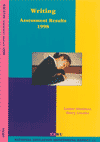 CLICK for
full report CLICK for
full report
|
GOOD
NEWS
Students were able to engage in a wide variety of writing
tasks in a short time without preliminary motivation
and guidance from a class teacher. Many students’ attempts
at independent writing under these assessment conditions
were impressive.
72 percent of year 4 students and 60 percent of year
8 students reported a positive feeling about writing.
This is a considerable improvement over attitudes reported
in local and international surveys in the past. It
may reflect the influence in recent years of more liberal
approaches to writing. |
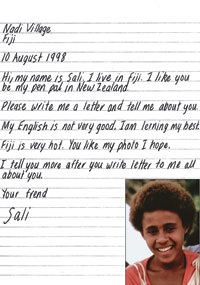
There is evidence of considerable improvement in functional
writing and spelling between year 4 and year 8. Typical
gains of over 30 percent are amongst the highest seen in
NEMP subject reports.
A fresh personal voice is apparent in numerous examples
of children’s writing. This reflects a confidence
and willingness to try out new ideas. In fact, many students
believe that the best ways to become a good writer are
to “use your imagination” and “try out
new ideas”.
Tasks that were clearly prescriptive of what students were
to write were handled well. Where students saw a clear
purpose or structure for their writing, they ach-ieved
better than in more open-ended writing tasks. |
 |
CONCERNS
When provided with the opportunity to edit, there was a low
frequency of self-correction in both meaning and surface
features (e.g. punctuation and spelling).
Boys are not achieving as well as girls in the majority of
tasks, and their attitudes to writing are not as positive.
These gaps need to be addressed in schools and in research.
Although there was a considerable improvement in spelling between
year 4 and year 8, there is still concern about level of spelling
ability particularly at year 4. Many students appear to
be better at avoiding errors in their own writing than detecting
errors in the writing of others.
A very wide range of ability in writing was evident. Differences
in performance were especially apparent between low decile
schools and the rest, indicating a polarisation of achievement
levels in our schools.
Half of the year 8 students report that they are writing no
more than once a week. If this is a correct perception, then
they are not writing often enough to improve. If this is not
correct, the links between scheduled writing sessions and writing
in other learning areas should be clarified.
Too many pupils did not know what their teachers thought about
their writing. This suggests a lack of regular or appropriate
teacher feedback.
|
LOOKING
AHEAD –
SUGGESTIONS FOR PROGRESS
Editing
Schools need to further develop teaching practices on such
matters as error identification, self-correction of errors,
vocabulary enrichment, development of a spelling conscience
from an early age, and engaging in shared writing to provide
good models.
Developing
a sense of audience
Students seem to need more practice at sharing their writing
with others in order to develop a sense of audience and clarity
of communication. There is a need to extend the range of audiences
outside the classroom. This would require students to also
develop sharing, listening and questioning skills.
Gender
Gap
We need to continue to encourage boys to take a more positive
attitude towards writing. This could be done by investigating
and choosing types of writing tasks boys find most engaging,
inviting male writers to visit the school, as well as females,
and considering the kind of reading materials available to
boys.
Frequency
of Writing
Pupils need more frequent practice at all forms of writing.
The benefits of shared and guided writing should be recognised.
Communication with Parents Schools should continue to encourage
parents in ways of supporting their children’s writing
development. |
|
|
The
1998 NEMP assessments have provided some good news about the achievements
and attitudes of Mäori students. They outperformed non-Mäori
students at both year 4 and year 8 on a number of physical
education tasks, and year 4 Mäori students were more positive
than non-Mäori in their enjoyment of writing and in their
attitudes towards health education. Once again the results suggest
that Mäori students perform better on tasks when they can
relate to the contexts, the activities involve practical applications
of learning, and they are able to work together with others in
paired or team situations.
Listening and Viewing
There were substantial differences at year 4, with non-Mäori
students outperforming Mäori students on about half of the tasks.
This was not the case at year 8 where Mäori and non-Mäori
students performed similarly on 67 percent of the tasks.
Health
Mäori students performed as well as non-Mäori students
on 75 percent of the health tasks. Year 4 Mäori students were
more positive than non-Mäori students in their attitudes towards
learning in this curriculum area.
At the year 8 level a number of tasks focussed on health risks which
are specially relevant to Mäori people, yet scores on these
tasks declined as the proportion of Mäori students in a school
increased.
Physical Education
In physical education Mäori students at both levels gained significantly
higher scores than non-Mäori students on 20 to 30 percent of
the tasks. Mäori students achieved as well as non-Mäori
on all remaining year 4 tasks and all except one year 8 task.
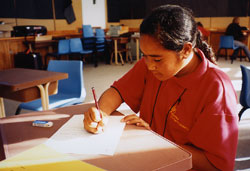 Writing Writing
Mäori students performed as well as non-Mäori on 60 percent
of the writing tasks. On the remaining 40 percent of tasks non-Mäori
performed significantly better. There was no clear pattern in the
type of writing tasks that suited or challenged Mäori students.
It is a matter of concern that serious gaps between Mäori and
non-Mäori achievement are not being reduced from year 4 to year
8.
Moving Forward
The results identified a number of areas in which Ma¯ori students
performed well. They also showed some serious gaps between Ma¯ori
and non-Ma¯ori achievement. It is important that schools and
teachers look for ways to take advantage of Ma¯ori students’ strengths
and successes to support their learning in other areas.
|
 |
| |
|
 Writing
Writing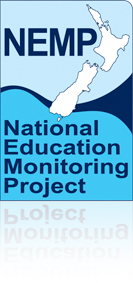



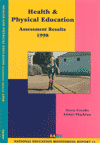
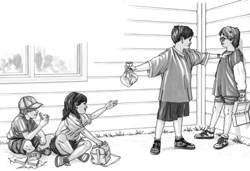 High
percentages of year 4 and year 8 students feel comfortable
asking an adult to help in a bullying situation.
High
percentages of year 4 and year 8 students feel comfortable
asking an adult to help in a bullying situation. • Providing
frequent opportunities for students to develop critical thinking
skills;
• Providing
frequent opportunities for students to develop critical thinking
skills;
